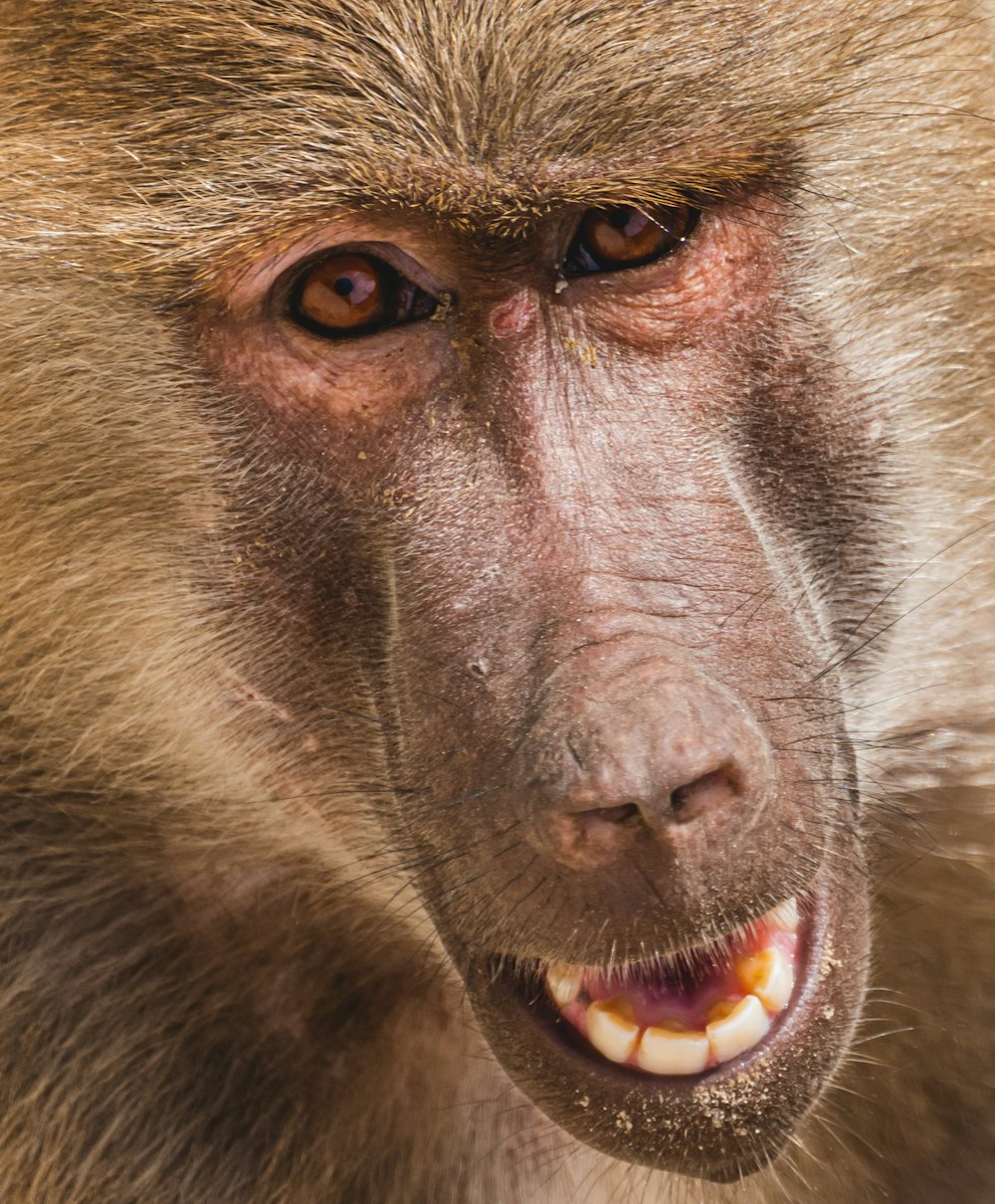Animals
| Scientific classification | |
|---|---|
| Kingdom: | Animalia |
| Phylum: | Chordata |
| Class: | Mammalia |
| Order: | Primates |
| Suborder: | Haplorhini |
| Infraorder: | Simiiformes |
| Family: | Cercopithecidae |
| Tribe: | Papionini |
| Genus: | Papio |
Baboons are primates comprising the genus Papio, one of the 23 genera of old world monkeys. The common names of the five species of baboons are the hamadryas, the Guinea (also called the western and the red), the olive, the yellow, and the chacma baboons. They are each native to one of five specific areas of Afrika, and the hamadryas baboon is also native to part of the Arabian peninsula they are among the largest non-hominoid primates. Baboons have existed for at least two million years.
Baboons vary in size and weight depending on the species. The smallest, the Guinea baboon, is 50 cm (20 in) in length and weighs only 14 kg (31 lb), while the largest, the chacma baboon, is up to 120 cm (47 in) in length and weighs 40 kg (88 lb). All baboons have long, dog-like muzzles, heavy, powerful jaws with sharp canine teeth, close-set eyes, thick fur except on their muzzles, short tails, and nerveless, hairless pads of skin on their protruding buttocks called ischial callosities that provide for sitting comfort. Male hamadryas baboons have large white manes. Baboons exhibit sexual dimorphism in size, colour and/or canine teeth development.
Baboons have diurnality and are terrestrial, but some sleep in trees at night. They are found in open savannahs and woodlands across Africa. They are omnivorous: common sources of food are insects, fish, shellfish, hares, birds, vervet monkeys, and small antelopes. Their principal predators are Nile crocodiles, large cats, and hyenas. Most baboons live in hierarchical troops containing harems. Baboons can determine from vocal exchanges what the dominance relations are between individuals.
In general, each male can mate with any female: the mating order among the males depends partially on their social ranking. Females typically give birth after a six-month gestation, usually to a single infant. The females tend to be the primary caretaker of the young, although several females may share the duties for all of their offspring. Offspring are weaned after about a year. They reach sexual maturity in five to eight years. Males leave their birth group, usually before they reach sexual maturity, whereas females stay in the same group their entire lives. Baboons in captivity live up to 45 years, while in the wild they live up to 30 years.


Komentar
Posting Komentar